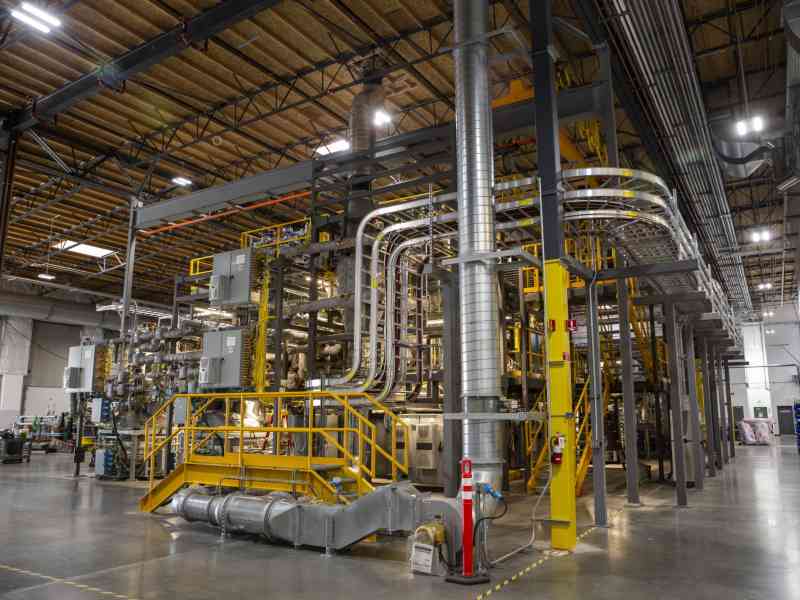 The Integrated Effects Test (IET) is a multi-loop test facility with a non-nuclear system that is heated by an external power source and used to help validate the thermal hydraulics needed to demonstrate molten salt reactor systems (Source: Southern Company).
The Integrated Effects Test (IET) is a multi-loop test facility with a non-nuclear system that is heated by an external power source and used to help validate the thermal hydraulics needed to demonstrate molten salt reactor systems (Source: Southern Company).
Georgia-based utility Southern Company and nuclear reactor design firm TerraPower have installed a test facility at TerraPower’s laboratory in Everett, Washington, a step toward advancing its next-generation nuclear reactor.
The Integrated Effects Test (IET) is a multi-loop test facility with a non-nuclear system that is heated by an external power source and used to help validate the thermal hydraulics needed to demonstrate molten salt reactor systems.
TerraPower, backed by Bill Gates, is working on a chloride salt-fueled reactor without a moderator, the Molten Chloride Fast Reactor (MCFR). The MCFR technology operates at higher temperatures than conventional reactors and offers potential for process heat applications and thermal storage.
TerraPower says the reactor can operate using several fuel sources – including depleted and natural uranium or even spent fuel from existing reactors. The company hopes to demonstrate it in the early 2030s.
“The project culminates years of separate effects testing and is expected to demonstrate how the MCFR technology will perform in delivering a commercial-scale, cost-effective, carbon-free molten salt reactor energy source by 2035,” said Southern Co. in a statement.
The installation of the IET was part of a seven-year, $76 million project with the Department of Energy (DOE) to further develop the MCFR system. Work began in 2015 and is intended to promote the design, construction and operation of Generation-IV nuclear reactors. The project team also included CORE POWER, EPRI, Idaho National Laboratory, Oak Ridge National Laboratory and Vanderbilt University.
The system will also support development and operation of the Molten Chloride Reactor Experiment (MCRE) at Idaho National Laboratory, a less than 200 KW reactor meant to provide experimental and operational data.
The MCFR is separate from TerraPower’s natrium reactor and integrated energy storage technology under development.
With partner GE-Hitachi, TerraPower plans to build the natrium reactor in Kemmerer, a southwestern Wyoming city of 2,600 where the coal-fired Naughton power plant operated by PacifiCorp subsidiary Rocky Mountain Power is set to close in 2025.
Proponents of the project, featuring a 345 MW sodium-cooled fast reactor and molten salt-based energy storage, say it would perform better, be safer and cost less than traditional nuclear power.
The high-operating temperature of the Natrium reactor, coupled with thermal energy storage, would allow the plant to provide flexible electric output that complements variable renewable generation such as wind and solar. In addition, this project would establish a new metal fuel fabrication facility that is scaled to meet the needs of this demonstration program.
